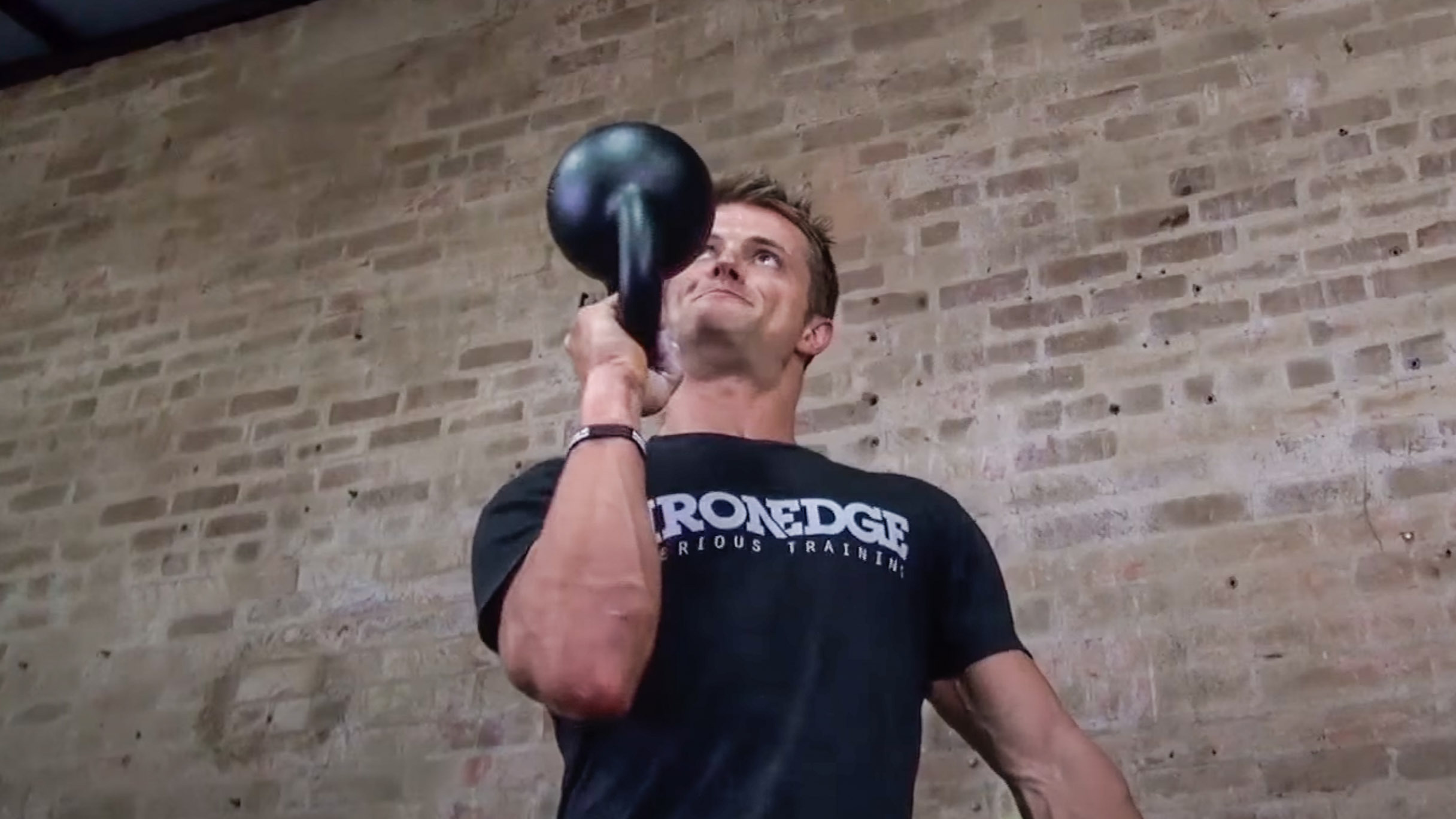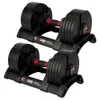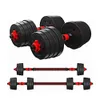
Don't let anyone tell you that you can't build full-body strength and grow muscle mass using light weights — it's possible, you just need a few tips to help. I’ve been teaching weightlifting for years, and here are the three best ways I help clients build strength without lifting heavy weights.
As a personal trainer, one of the best tips I’ve learned over the years is that free weights are far more versatile for building strength and muscle than gym machines. Whether or not you plan to use barbells, gym machines, kettlebells, or a set of the best adjustable dumbbells will depend on your goals. But it’s a common misconception that you can’t get stronger unless you exclusively lift heavy. Here’s how.
Can I gain strength from light weights?
Absolutely. Weight training falls into three main camps: hypertrophy for building muscle, strength training for building strength, and endurance for improving muscular endurance, or how long your muscles can sustain exercise. And no, they’re not the same thing. Your muscles can get stronger without growing much in size — we cover this in more detail in this hypertrophy vs strength training debate, along with programming for each training protocol.
You can strengthen muscles and improve lean muscle mass whether or not the weights are super heavy, but if you plan to improve maximal strength and work on your one-rep max — the heaviest amount you can lift or close to — you will need to lift heavy.
Let’s tap into some of the research surrounding light weights. One exploratory 2023 study found a full-body strength program using lighter loads and exercising close to failure can promote muscular adaptations for middle-aged and older adults. A British Journal of Sports Medicine systematic review suggests any resistance training is better than none (no surprises there) and that with every training prescription, regardless of age, gender, session frequency, sets, or load, there were improvements to muscular strength and muscle mass.
3 tips for building stronger muscles using light weights
1. Lift close to failure
A famous study published in the Journal of Applied Physiology found effort to be a key indicator of muscle growth and strength — not load.
The study concluded that those who lifted lighter weights for higher reps to muscular fatigue reported similar results in strength and muscle mass to those lifting heavy for fewer reps, and there was no indication of differences between the growth hormone levels produced by the body as a result. The results also support that you can increase maximal strength using high or low loads if you lift heavier loads periodically. That said, if your goal is to work at your one rep max, you’ll need to adopt heavy load training, and there’s a neuromuscular advantage to working this way.
Sign up to get the BEST of Tom's Guide direct to your inbox.
Get instant access to breaking news, the hottest reviews, great deals and helpful tips.
High reps, even at a lighter load, still increase overall training volume to help you reach failure, which the study speculated helped ‘maximal activation of their motor units,’ ultimately leading to ‘similar increases in muscle strength and hypertrophy.’ When I program for clients, I tend to bring them a few reps shy of failure during sets, then we move to failure in the final set.

2. Focus on good form and range of motion
Working at a lighter load allows your body to maintain good form and work through a full range of motion (ROM). ROM refers to how capable a joint is or how much movement can be performed around a joint. A common mistake found during heavy weightlifting is sacrificing form to shift the weight, leading to partial reps, not recruiting the muscles properly and potential injury.
Increasing your range of motion can target muscles harder for longer without other larger muscle groups overpowering the exercise. Take an isolation exercise like a biceps curl as an example; people in the gym throwing their weight during curls aren’t showcasing power or working the biceps properly. Instead, they swing because the biceps muscles can’t manage the weight alone and rely on momentum.
Some research backs this, including one study that demonstrated subjects experienced better gains from performing strength training with full range of motion versus those using a short range of motion. Another reason to concentrate on a range of motion is that your muscles work for longer, which refers to the time under tension technique for muscle adaptation. That means muscles are held under tension throughout the entire exercise, so sometimes, slow really is better if you want to reach fatigue.
3. Get creative

Novice lifters may initially notice increases in strength and muscle using lighter weights, but how do seasoned weightlifters avoid a plateau?
As a general rule of thumb, gradually increase volume or intensity, but don’t get sucked into thinking this always means lifting more — get creative with your exercise programming instead. If your muscles meet with sufficient challenge, you can benefit from progress. Remember that effort matters, so consider surprising your body with new exercises or variations of your favorites and change up your sets, reps and tempo.
You could also add accessory exercises into your strength routine to target and strengthen singular, smaller, or weaker muscle groups. Also known as auxiliary exercises, these moves support the primary “big lifts” or compound exercises like the bench press or squat to help you lift better. For example, an accessory lift for the bench press could be a triceps dip.
Increasing intensity can also be achieved using tempo training like a complex (here’s a 5-move barbell complex workout as one example). Combine a series of exercises in a sequence back-to-back without rest, like one giant working set, to target multiple muscle groups for longer.
Verdict
There are many ways to challenge your body without defaulting to heavy weights. If you’re looking for a jumping-off point, try periodization to get you used to both styles. As mentioned in the studies above, you could start with a low load and high volume strength training plan for the first month (especially if you’re a beginner to weightlifting), then add some heavier lifts and intensity for several weeks to switch things up.
Adapt your training plan as your muscles adapt to keep things fresh and avoid a plateau, and play around with different styles of resistance training to see which you enjoy most. Think HIIT, CrossFit, or working with a strength and conditioning coach to guide you.
Look at your work volume (reps, sets and load) and ensure you prioritize enough of it to overload your body (known as progressive overload). While lifting maximal loads builds maximal strength, lifting a low load for high reps to failure can still help you strengthen and build.
More from Tom's Guide
- High reps vs heavy weights
- I did the 3-minute puppy pose every day for one week, here's what happened
- Forget crunches — you only need a kettlebell and 4 exercises to strengthen your core

Sam Hopes is a level 3 qualified trainer, level 2 reiki practitioner and senior fitness writer at Tom's Guide. She is also currently undertaking her Yoga For Athletes training course. Sam has written for various fitness brands and websites over the years and has experience across brands at Future such as Live Science, Fit&Well, Coach, and T3.
Having worked with fitness studios like F45 and Virgin Active, Sam now primarily teaches outdoor bootcamps, bodyweight, calisthenics and kettlebells. She also coaches mobility and stretching-focused classes several times a week and believes that true strength comes from a holistic approach to training your body.
Sam has completed two mixed doubles Hyrox competitions in London and the Netherlands and finished her first doubles attempt in 1:11.



